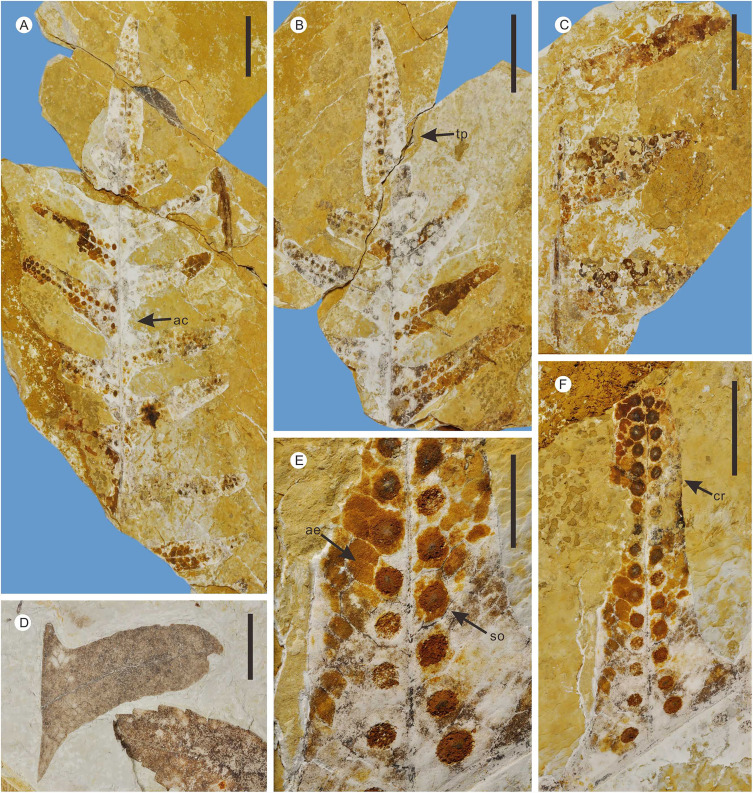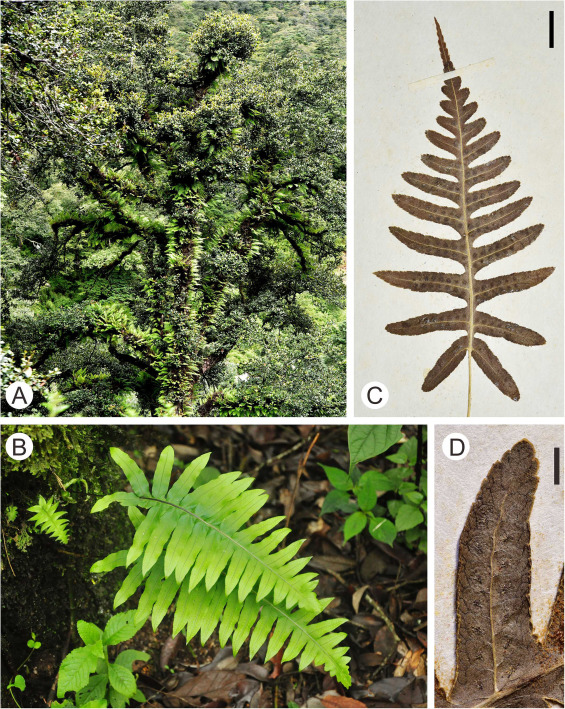The Polypodiaceae is the largest family of ferns with about 1200 living species today. The genus Goniophlebium in family Polypodiaceae is now distributed from southeastern Asia to Australia. Despite several studies have addressed the classification of the genus, we still need megafossils to provide solid proof for understanding the evolutionary history of Polypodiaceae. Until now, there is no confirmed Cenozoic megafossil record of genus Goniophlebium reported anywhere in the world.
Prof. ZHOU Zhekun and his team of Xihsuangbanna Tropical Botanical Garden (XTBG) found first megafossil record of Goniophlebium in Wenshan, southeastern Yunnan, China. After morphological studies, they regarded the fossil as new and named it as Goniophlebium macrosorum Xu et Zhou n. sp..
The researchers conducted morphological studies on both frond fossils and in situ spores to determine the systematic position of these fossils. They also examined the morphology of several genera that share similar morphology with Goniophlebium in Polypodiaceae.
Furthermore, the researchers compared their fossils to all extant species of Goniophlebium using two quantitative features (length and width of pinna) and five qualitative features (shape of the apex, shape of the areolae, angle between costa and pinna, lateral pinna margin, and the basal shape of the pinna, known as decurrency.
With discovery of the fern fossils in Wenshan, the researchers concluded that Goniophlebium has existed in East Asia since at least the Middle Miocene (15.2–16.5 million years ago). The hemi-epiphytic fern history of Yunnan could be dated back at least to the Middle Miocene.
Furthermore, the hemi-epiphytic ferns with complex ecological structures have been established in humid subtropical evergreen broadleaved forests in Yunnan for at least 15 million years ago.
The study entitled “The first megafossil record of Goniophlebium (Polypodiaceae) from the Middle Miocene of Asia and its paleoecological implications” has been published online in Palaeoworld.

Goniophlebium macrosorum Xu et Zhou n. sp. from Wenshan, Yunnan, China. (Images by XU Congli)

Frond morphology and habitat of extant Goniophlebium.(Images by XU Congli)


